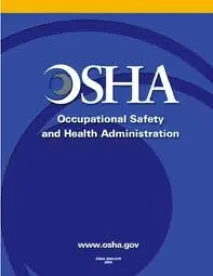The Occupational Safety and Health Administration (OSHA) develops an annual target list for inspections. OSHA’s current list includes over 1,300 Illinois and Wisconsin locations. Many of these are recognizable companies. Not all will be inspected. However, many will be subject to an inspection, and since the penalties handed out by OSHA in the last few years have risen dramatically, businesses would be wise to evaluate their vulnerability to such inspections.
Under OSHA’s Site Specific Targeting (SST) program, the likelihood of an inspection depends upon whether a company is on the primary, secondary or tertiary list. In order to determine that, the business needs to know its OSHA incident rates, known as the Days Away, Restricted and Transferred (DART) rate and Days Away from Work Illness and Injury (DAFWII) rate. These may be different than the company’s own incident rate metric. More on that later.
Recent Experience
Recently an OSHA inspector arrived at a well-known Wisconsin business and explained he was there for a Site Specific Targeting (SST) Program inspection. He explained that the inspection would last about four days. This particular location of the company only had about 100 employees, so it was clear that he planned to leave no stone unturned.
The inspector began the inspection by conducting a record review. He calculated the company’s incident rates based off of their 2009, 2010, 2011 and 2012 OSHA 300 logs. Based upon his calculations, he explained that the company exceeded the incident rates OSHA uses and that he would continue with the inspection the next day and the remainder of the week.
The company safety director contacted our Michael Best OSHA team and explained the situation. We walked through the process by which the company was selected for this site specific targeting program. We then calculated the company’s DAFWII rate, and DART rates for the years 2009, 2010, and 2011 (the three years used by OSHA in its current targeting) and came up with a different result than OSHA. We checked the numbers again. Again, our results indicated the company should not have a four day inspection, or an inspection at all.
The calculations for the OSHA DART and DAFWII rates use the following formulas:
DART Rate: (N ÷ EH) x (200,000)
Where N is the number of cases involving days away and/or restricted work activity, and/or job transfers; EH is the total number of hours worked by all employees during the calendar year; and 200,000 is the base number of hours worked for 100 full-time equivalent employees (i.e. that is a constant in the formula).
DAFWII Rate: (N ÷ EH) x (200,000)
Where N is the number of cases involving days away from work; EH is the total number of hours worked by all employees during the calendar year; and 200,000 is the base number of hours worked for 100 full-time equivalent employees.
NOTE: The DART and DAFWII rates are differentiated by the makeup of N in the calculation formula. For the DAFWII rate, N is equal to the total of Column H from the OSHA-300 Log. For the DART rate N is equal to the total of Column H plus Column I.
Our result indicated that the inspection should be halted, based on OSHA’s own protocols for these inspections. While the 2009 rate that put the company on the list exceeded OSHA’s limit, the 2010 and 2011 rates were below OSHA’s limit, and therefore, OSHA should have halted the inspection after verifying the recordkeeping was accurate.
One of our team members hit the road early the next morning to greet the OSHA inspector. Together the incident rates were discussed and the inspector’s calculations were discovered to be in error. Our team member then explained to the inspector that under OSHA’s protocol, the inspection must be cancelled. The inspector was vaguely familiar with the protocols. He left to determine more clearly what he needed to do. Several days later he indicated over the phone to our team member that the inspection was cancelled and the matter was closed.
Recommendations
This experience demonstrates that businesses need to know whether they are on OSHA’s target lists. It is vital that businesses who are on the SST list understand how to calculate their OSHA incident rates. These calculations must be determined for the relevant years that OSHA considers under its inspection protocol. A company may have gotten on the list for one bad year, but improved in the subsequent years, such that the inspection can be cancelled if you know what to do. These protocols can be found here.




 />i
/>i

